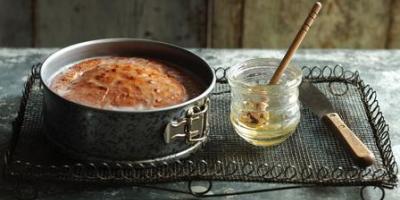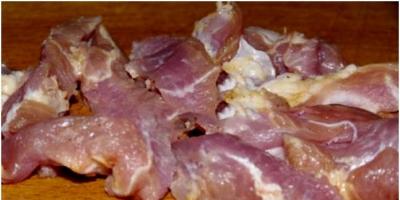Flowers are wonderful. They are used absolutely everywhere. Of course, their main goal is to decorate any object and any territory. With the help of beautiful vines and climbing annuals, you can create charming flower arrangements, or you can completely change the look of a house or some kind of gazebo. Also, these lovely plants can make a stylish fence or hide the jambs of builders on the house. Garden climbing plants have the ability to build small architectural elements - such as small arches, hedges. In this article, we will list climbing flowers for the garden for you. Here you will find their photos and names.
Quite often on garden plots plant vines. One of the main advantages of vines is the ability to protect a small area located near the tree from intolerable noise or unpleasant dust. highway. At the same time, these plants give a magnificent effect to the facade of the house. In addition to vines, there are a great variety of different and charming plants that can improve your home and garden.
Vertical gardening. Some rules and nuances
Any vine flowers require some kind of support. The shape and size of such a plant depend on the properties of the plant itself and the location of the structure. Here are the requirements that the design must satisfy:
- The support must be strong. Its strength depends on the mass of the plant. For example, an ordinary plastic cucumber net is perfect for annuals. But massive vines require a rigid metal support that can withstand harsh weather conditions.
- Creeping plants are less demanding. They can independently find support in ordinary brickwork. Decorative plaster can replace plants such as girl's grapes or ivy. They are perfect for creating a spectacular finish for a small home.
- For clinging varieties (sweet peas or morning glory, for example), a thin (reinforcing) mesh or even ordinary thin wire on a wooden frame will work well.
- Supporting plant varieties require support located either strictly vertically or at an angle of forty-five degrees. Arched ceilings or trellis is perfect for honeysuckle, clematis and other beautiful plants.
- Some plants cannot secure themselves to a support on their own. Therefore, you need to prepare twine or special clothespins for them.
- It should be noted that climbing plants do not like rearrangements. If they put you in one place, then it’s forever. Otherwise, the plant is simply destroyed.

The most popular and interesting hedges and flowering arches
If you want to choose beautiful climbing flowers for your garden, then you should pay attention to climbing plants. It is worth noting that such plants can grow very quickly. They grow in such a way that in a couple of years they are able to create absolutely hedge. You need to choose the varieties that are most suitable for your climate and region. There are so many species of bindweed that it is enough to green almost any region of our vast country.
On a note! The roots of the vines perfectly take moisture from under the foundation of the house, and its walls protect from rain and wind.
Some rules to choose from:
- In the southern regions roses, grapes or honeysuckle grow well.
- In the east, we recommend planting actinidia, Chinese lemongrass or kirkazon.
- Ivy and vines, which are unpretentious to shade, will thrive on the north side.
- It is necessary to plant loaches in the garden taking into account flowering and moisture requirements. It is better to place moisture-loving varieties in the area where there is an irrigation system.
Yearlings.
These plants require too much attention, but at the same time they will bring a lot of joy and admiration. One-year-olds do not require any support. They calmly know how to attach to a surface. They will perfectly cover a fence or gazebo without your help. Just pull the rope or twine in the desired direction and you're done.

Do you like to do experiments? These varieties of plants are perfect for you as test subjects.
It should be noted that many species sow on their own. And very abundantly. This property must be taken into account.
Here are examples of garden climbing plants suitable for the central part of Russia:
Ampelous gloxinia is an annual. Undemanding to yourself. Its flowers have a huge number of different colors and shades. Flowering period: early summer - first frost. Afraid of cold and drafts. It should be planted in early May in sunny and windless places. The most popular varieties are "Barclay" and Azarina climbing.

Bell-shaped grapes, otherwise known as kobeya. Emits a charming honey aroma. The inflorescences have a palette from delicate blue to purple. The buds bloom from July and last until about October. They are moisture-loving and require regular watering and fertilization. Suitable for decorating hedges and gazebos.

Morning glory - has bright and beautiful blue or crimson flowers. IN favorable conditions Can perfectly decorate a fence. Grows until the first frost.

Hyacinth beans or dolichos have purple-white flowers that turn into purple pods by late summer. This plant is suitable for decorating a garden in the style of “Oriental motifs”, especially suitable for brick or stone walls.

The bright yellow yellow carp can decorate a five-meter wall with its interesting yellow flowers in a month. It should be noted that it loves southern sunny sides and is not picky about watering and soil composition.

Sweet peas are unpretentious. It has delicate tones and an absolutely delicate and wonderful aroma. He is rightfully the king among climbing garden plants.

Don't forget that there are plant varieties that are used to decorate flower beds and borders.
Perennials are emerald garden builders.
Above are some interesting climbing annual flowers for the garden. These plants are considered annual. But there are also perennial climbing plants. They should be treated with care and responsibility. They are able to create beautiful and creative designs for the garden, which should be durable and reliable. 
In central Russia, wisteria, clematis, ivy, bean grass and others are popular. Let's talk briefly about each of them.
Wisteria - this plant is perfect for creating arches, pergolas and garden paths. Multi-colored inflorescences will give a wonderful effect. They can be blue, purple, and pink. If you take good care of them and cover them well for the winter, then wisteria will easily tolerate even a twenty-degree cold.
Advice: In the northern regions, it is better to plant the plant in a wooden masonry. You can then bring it home for the winter.
Clematis are sun- and heat-loving plants. They are also afraid of the cold. Paradoxically, the roots should be in the shade, completely hidden from the sun's rays.

Ivy loves shade. In one season, he is able to create a stylish living fence on a summer cottage.

Garden climbing bean, also known as alpine bean, is frost-resistant, shade-loving, and is a bush with long flowering branches. Has poisonous berries. Therefore, if you have children, it is not recommended to plant the plant. The plant is suitable only for southern regions. Already at -10, the alpine bean tree freezes completely. 
Versatile climbing rose bushes - great for vertical gardening. The plant has the most beautiful flowering, which occurs only in early summer. Another disadvantage is the presence of prickliness. 
Wood pliers is a universal vine for the northern regions. Requires regular watering and loosening. Does well in the shade.
Maiden grapes - flowers are completely absent. But it makes up for this with charming bright green foliage. Absolutely unpretentious plant. The only thing you need to do is prune the plant in the fall. The girl's grapes don't require anything more from you. 
Finally
Now you know what climbing flowers you can plant in your dacha. I would like to note that more and more gardeners are planting climbing plants in wooden tubs, which provides minimal care and the ability to protect the bush from frost.
As you can see, with the help of these wonderful plants, anyone can turn their plot into a piece of paradise. The main thing is to put in a little effort and everything will work out. Everything is in yours in capable hands. Good luck!
March madness is exactly how the first calendar month of spring is perceived by those who grow seedlings of their favorite vegetables themselves. In March, they sow their favorite tomatoes and peppers, carry out the first sowings in the greenhouse, and even sow vegetables in the beds. Growing seedlings require not only timely planting, but also a lot of care. But the troubles are not limited to her. It is worth continuing to sow in greenhouses and on window sills, because fresh greens from the beds will not appear so soon.
As spring approaches houseplants They gradually emerge from their dormant state and begin to grow. After all, already in February the days become noticeably longer, and the sun warms up like spring. How to help flowers wake up and prepare them for the growing season? What do you need to pay attention to and what measures should you take to keep your plants healthy, blooming, multiplying and making you happy? We’ll talk about what indoor plants expect from us in the spring in this article.
One of the most important rules growing strong and healthy seedlings- presence of the “correct” soil mixture. Typically, gardeners use two options for growing seedlings: either a purchased soil mixture or one made independently from several components. In both cases, the fertility of the soil for seedlings is, to put it mildly, questionable. This means that the seedlings will require additional nutrition from you. In this article we will talk about simple and effective fertilizers for seedlings.
After a decade of catalog dominance by original variegated and colorful tulip varieties, trends began to change. At exhibitions, the best designers in the world offer to remember the classics and pay tribute to charming white tulips. Sparkling under the warm rays of the spring sun, they look especially festive in the garden. Welcoming spring after a long wait, tulips seem to remind us that white is not only the color of snow, but also the joyful celebration of flowering.
Despite the fact that cabbage is one of the most popular vegetables, not all summer residents, especially beginners, can grow its seedlings. In apartment conditions they are hot and dark. High-quality seedlings in this case it is impossible to obtain. And without strong, healthy seedlings it is difficult to count on good harvest. Experienced gardeners know that it is better to sow cabbage seedlings in greenhouses or greenhouses. And some even grow cabbage by direct sowing seeds in the ground.
Flower growers tirelessly discover new indoor plants, replacing some with others. And here the conditions of a particular room are of no small importance, because plants have different requirements for their maintenance. Lovers of beauty often face difficulties flowering plants. After all, in order for flowering to be long and abundant, such specimens require special care. There are not very many unpretentious plants blooming in rooms, and one of these is streptocarpus.
Chicken cordon bleu rolls with béchamel sauce is an excellent dish for festive table and daily meals! It’s easy and quick to prepare, it turns out juicy, and the thick bechamel sauce is finger-licking good! WITH mashed potatoes, pickled cucumber and a slice of fresh bread will make a hearty and tasty dinner. Choose the cheese for this recipe according to your taste, processed or blue mold. It is important that the cheese and ham are sliced very thin, this is the secret of success!
Calendula (marigold) is a flower that stands out among others with its bright color. Low bushes with delicate orange inflorescences can be found on the side of the road, in the meadow, in the front garden next to the house or even in vegetable beds. Calendula is so widespread in our area that it seems like it has always grown here. About interesting decorative varieties calendula, as well as about the use of calendula in cooking and medicine, read our article.
I think many will agree that the wind is well perceived by us only in the romantic aspect: we are sitting in a cozy warm home, and the wind is raging outside the window... In fact, the wind blowing through our areas is a problem and there is nothing good about it. By creating windbreaks with the help of plants, we break the strong wind into several weak currents and significantly weaken it destructive force. How to protect a site from the wind will be discussed in this article.
Making a shrimp and avocado sandwich for breakfast or dinner couldn't be easier! This breakfast contains almost everything necessary products, which will recharge you with energy so that you won’t want to eat until lunch, without adding extra centimeters to your waist. This is the most delicious and light sandwich, after, perhaps, the classic cucumber sandwich. This breakfast contains almost all the necessary products that will recharge you with energy so that you won’t want to eat until lunch.
Modern ferns are those rare plants antiquities, which, despite the passage of time and all kinds of cataclysms, not only survived, but were also largely able to preserve their former appearance. Of course, it is not possible to grow any of the fern representatives indoors, but some species have successfully adapted to life indoors. They look great as single plants or decorate a group of decorative foliage flowers.
Pilaf with pumpkin and meat is Azerbaijani pilaf, which differs in the method of preparation from traditional oriental pilaf. All ingredients for this recipe are prepared separately. Rice is boiled with ghee, saffron and turmeric. The meat is fried separately until golden brown, and pumpkin slices as well. Separately prepare the onions and carrots. Then everything is placed in layers in a cauldron or thick-walled pan, a little water or broth is poured in and simmered over low heat for about half an hour.
Basil is a wonderful universal seasoning for meat, fish, soups and fresh salads- well known to all lovers of Caucasian and Italian cuisine. However, upon closer inspection, basil turns out to be a surprisingly versatile plant. For several seasons now, our family has been happily drinking aromatic basil tea. In a flowerbed with perennials and in flowerpots with annual flowers, bright spice plant a worthy place was also found.
Thuja or juniper - which is better? This question can sometimes be heard in garden centers and markets where these plants are sold. It is, of course, not entirely correct and correct. Well, it’s the same as asking what is better - night or day? Coffee or tea? Woman or man? Surely, everyone will have their own answer and opinion. And yet... What if you approach with an open mind and try to compare juniper and thuja according to certain objective parameters? Let's try.
– universal tool for garden design and camouflage of unsightly buildings in the country. They create coziness, are used as hedges and protect the house from noise and pollution, and at the same time are completely unpretentious in care.
There are a huge number of types of climbing plants - annual and perennial, green and flowering, fast-growing, exclusively ornamental and fruit-bearing. To understand this diversity, let’s take a closer look at the plants that are most popular among gardeners.
The best perennial varieties
Perennial plants are convenient because once you take the time to plant, you can enjoy this beauty for many years.
climbing rose
A favorite among climbing plants among landscape designers. Will allow you to decorate a garden in Victorian style, and any country cottage area will make you more beautiful and well-groomed. Even an old village house, decorated with this rose, will sparkle with new bright colors. At the same time, the plant is unpretentious, and special care does not need.
Climbing roses are planted at the end of September or at the beginning of October. Planting and care includes the following important points:
- Roses will grow poorly in both heavy clay soil and light sandy soil. Therefore, it is better to provide them with a mixed type of soil.
- At the end of summer, add fertilizers to the soil - humus, humus, phosphorus, so that by the time of planting, ideal conditions have been formed for the rapid growth of shoots.
- The plants are photophilous; the planting site should be sufficiently sunny.
- Additional watering is necessary; rainwater alone will not be enough.
- Roses grow well not only in length, but also in width. A distance of at least 1 meter must be left between bushes.
Climbing roses will delight you with their splendor for many years; just do not forget to cover them for the winter, because they will not survive severe frosts.
Flowers of incredible beauty, having in their color scheme orange, scarlet, crimson and golden shades. Kampsis comes from North America, but perfectly adapted to our winter frosts. It grows up to 15 meters in height, and timely pruning will allow it to be given any desired shape. It blooms for a long time - from June to September.
IMPORTANT: Bright flowers are attractive not only to people, but also to all kinds of insects, so you should not decorate the gazebo and other recreation areas in the country with Campsis.
Suitable for creating a hedge; a green fence strewn with large bells of stunning flowers will look gorgeous. In our country, the plant is widespread only in the south, but it can easily be grown in central Russia if you provide safe shelter for the winter. 

Her large hanging tassels of purple, white or blue flowers with a wonderful aroma will create a simply fabulous atmosphere in the garden. It was Wisteria that became the prototype of the magical Eywa tree in the film Avatar. This is a woody plant, the stems of which can reach a height of 18 m. It grows very well in a humid southern climate, but northern latitudes are also suitable for it. That's just lush flowering You will have to wait, because it begins to bloom profusely only from the 5th year of life. Wisteria is quite colorful even in the fall, when it has finished blooming. Its leaves take on a bright lemon hue, and its inflorescences turn into bean pods. 

The plant is not too demanding to care for. For active growth and flowering, it is enough to follow these rules:
- Sunny and protected from strong winds place for planting.
- Light fertile soil with good permeability. Wisteria will not grow at all only in calcareous soil.
- Moderate watering, the plant does not like waterlogging.
- Pruning is the key abundant flowering. At the end of May, last year's shoots are pruned so that their length does not exceed 30 cm, then their pruning is repeated in August for another 5 buds.
- Winter shelter. Late autumn Wisteria needs to be removed from the supports and placed on boards. You can cover the top with branches coniferous trees and agrofabric.
Otherwise, the plant will not cause much trouble. It is resistant to diseases and is very rarely attacked by insects.
Perennial varieties are suitable for those gardeners who do not want to spend time every year decorating their plot. If you are ready to regularly create new interiors in the garden, you better pay attention to annual plants.
Popular annual species
Annual plants are poorly adapted to cold, so they must be sown annually. But they also have their advantages. These plants are faster growing than their perennial relatives. In just two months they can completely cover any structure with dense thickets, and by mid-summer they will be presented in all their glory.
This annual vine is great for creating a screen for a terrace or balcony, for decorating a gazebo and fence, and also for planting in containers. It grows quickly - in mid-summer you will already have a solid green carpet with flowers of purple, blue, white or crimson color. Flowering begins in June and lasts until October.
TIP: The main condition for the rapid growth of Ipomoea is soil fertility. The plant needs to be fed regularly mineral fertilizers and a small amount of nitrogen.
Planting takes place in early May. You can plant both seeds and sprouts. You need to choose a well-lit place; in the shade, plant growth will slow down. Watering should be moderate as the soil dries out. No other additional care is required. 

Most often used to decorate terraces and balconies. The plant is valued not so much for its beauty as for its exquisite aroma, this can be judged from its name. Has a huge color palette and a long flowering period, which is 3-4 months. Tolerates spring frosts well, you can sow it already in early spring. It is important to provide support for the plant in time; if the moment is missed, you will not be able to untangle the shoots. To preserve the decorative effect of sweet peas for as long as possible, it must be provided good lighting and watering, as well as promptly remove wilted flowers. 

One of the oldest types. This vine was cultivated back in 1787, and to this day it remains a popular decoration for fences and gazebos in the country. The plant has shoots up to 4 m long and large bell-shaped flowers in purple and white shades. It begins to bloom from July until the first frost.
Suitable for growing in both sun and shade. It climbs the walls on its own, with the help of its antennae. Does not require special care. Planting can be done by seeds or cuttings. In the second case, for the winter the roots need to be dug up and stored in a cool room. The advantage of Kobeya is that there is no need to constantly remove fading buds. When the time comes, they fly away under the influence of the wind, and the plant remains decorative. 

Most climbing plants are easy to care for, but there are varieties that require no effort at all to grow.
The most unpretentious varieties of climbing plants
Some types of climbing plants literally grow on their own; they just need to be planted.
Record holder for unpretentiousness and resilience. It is, of course, not as impressive in its appearance as Rose or Wisteria, representing just a green wall, without flowers. But ivy also has its advantages:
- This evergreen. Even in mid-latitude climates, ivy will decorate fences and walls with its greenery throughout the year.
- Grows well anywhere, regardless of light level. Sucker roots allow it to stay on any surface.
- The green wall acts as a wonderful backdrop for other flowers - roses, gladioli, tulips.
The plant is successfully used for landscaping balconies and terraces, and a gazebo covered with ivy is a classic of the genre, a place for quiet solitude and dates for couples in love. 

This plant reveals its maximum beauty with the onset of autumn. Against the backdrop of a blooming garden, the bright palette of the leaves of the Maiden Grape is mesmerizing. The plant is also striking in its unpretentiousness. It grows on any soil, tolerates shade well and is not afraid of frost, so there is no need to cover it for the winter.
There is no need to create additional supports for it; the lashes will independently cover all available space with their foliage. Maiden grapes are not susceptible to diseases or pests. You can plant a plant, water it well and forget about it for a long time. The only necessary maintenance measure is trimming old vines, or those that have begun to grow in the wrong direction.
Maiden grapes bloom modestly in July with small but fragrant flowers. The fruits ripen in September; they are inedible and serve only a decorative function. 

IMPORTANT: Plastered walls may be damaged by planting with Maiden's Grapes. Under the weight of the foliage, the plaster will simply begin to fall off. Only brick, concrete and wooden walls can be decorated with plants without fear.
Among the varieties of climbing plants there are also those that, in addition to their beauty, also delight with useful fruits. This perfect option for rational gardeners who want to make the most of the territory of their plot.
Fruit-bearing types of climbing garden plants
These varieties of plants will not only decorate your garden, but will also allow you to harvest from them.
An unusually useful and completely unpretentious plant that can easily be grown in your dacha. Actinidia is valuable not only for its beautiful flowers that exude a light citrus aroma, but also for its delicious berries. They have a pleasant sweet and sour taste and a bright aroma reminiscent of gooseberries. The fruits have a rich vitamin composition, especially a lot of vitamin C.
Actinidia reaches a height of 15 meters, spiraling around a support. Has no antennae. It has an unusual bright color of foliage, as can be seen in the photo. It is famous for its frost resistance, surviving even at -50 degrees in Siberia. Due to its resistance to cold, the plant can be planted as early as April. And by the end of August you will reap the first harvest. 

Another unpretentious plant that is suitable for growing in the shade. Honeysuckle is not susceptible to disease and requires virtually no care. The main advantage is the magical aroma of its flowers. The fruits of the plant are also valued; they are consumed both fresh and used to make jam, wine and compotes. 

NOTE: Not all types of Honeysuckle are edible. Only black and blue fruits are eaten, while red and orange berries are poisonous.
Honeysuckle is also actively used in medicine. Eating honeysuckle fruits has a beneficial effect on the heart, blood vessels, and digestive system. They are used to treat hypertension, stomach ulcers and other gastrointestinal disorders. And baths with young branches of the plant successfully treat articular rheumatism.
Vigna
A variety of climbing bean. It has dense foliage, decorative white flowers and pods 50-60 cm long. The pods not only act as decoration, but also have a refined taste and nutritional value. They are used for preparing a variety of dishes, as well as for freezing and canning. Cowpea is also grown for beans. The plant is easy to care for and can bear fruit in any type of soil. Resistant to heat, drought and shade. The yield reaches 3 kg of pods per plant.
Any type of climbing plants can transform a manor or summer cottage beyond recognition, but often gardeners want immediate results, so that the area becomes green within the same year after planting. In this case, the choice should be made in favor of the fastest growing plants.
The fastest growing climbing plants
Some varieties of climbing plants have amazing growth rates. They allow you to green the area in just one season.
The fastest growing varieties of climbing plants include:
- Aubert's fallopia. A liana that can reach up to 8 meters in height in one growing season, and in subsequent years grows up to 15 m.
- Woodplier. The annual growth of this plant is 2-3 m, and in general it grows up to 10 m.
- . Its growth per year can be about 3 m, and in total it grows up to 8 m in height.
- . This plant can conquer any height. In Europe, there are specimens with shoots up to 100 m long. Its annual growth is 0.5 m.
- Kirkazon. It grows about 1 m per year, and the total height is about 10 m.
- . It rises to a height of up to 20 m, giving an increase of 2 m per year. Other grape varieties also have a high growth rate.
These types of plants require strong and reliable supports. Growing at tremendous speed, they increase not only the length of the lashes, but also their weight. Shaky and fragile structures collapse very quickly under their weight.
Climbing plants serve many functions. They will not only decorate the garden, but also hide unaesthetic elements personal plot, will create pleasant shading on the terrace or in the gazebo, and even provide tasty and healthy fruits. With all this, they require minimal care, and even a novice gardener without experience can grow such plants.
Video compilation
Review suitable plants from the video channel "Dachny Design".
Every summer resident or owner of a private house strives to decorate his plot, create beautiful landscapes and cozy corners on it. Climbing plants for the garden will help you quickly hide the shortcomings of an old fence or hide a nondescript wall of a building. Green screen attracts attention and delights, and living plants fill the air with sweet aromas and create a wonderful place for relaxation and meditation.
What to choose for your garden: annuals or perennials
Climbing flowers for the garden are conventionally divided into annual and perennial. The former are characterized by rapid growth and long flowering. When choosing annuals for hedges, it is necessary to purchase those species that develop as quickly as possible, since they should show themselves in all their glory by the beginning or middle of summer.
Undoubtedly, annuals can decorate the desired space in the shortest possible time, but their main disadvantage is their short life span. Such crops must be grown every year from scratch by seedlings or sowing in open ground.
Perennial vines easily tolerate winter and do not require such labor-intensive care as annual ones. Their flowering period is shorter, but the main advantage is that the green hedge appears already in early spring with the first leaves.
Annual climbing plants
The advantage of annuals is the possibility of annual replacement. If you like variety, annual climbing plants for the garden will allow you to constantly change. appearance landscape, choose new colors and turn various ideas and fantasies into reality.
Morning glory (lat. Ipomoea)
One of the fastest growing annuals. In the first couple of months, morning glory is capable of growing vines more than a meter long. This culture will quickly decorate any fence or gazebo.
Morning glory is used to decorate not only vertical surfaces, but also horizontal ones. Without support, the sprouts spread independently along the ground, entwining other vertical plants and tree trunks. Morning glory has beautiful large flowers that resemble a gramophone in shape. The most common colors are burgundy, purple, blue and pink. The buds open with the morning sun and close at noon.
The most unusual variety of this species is Ipomoea Kvamoklit. It is distinguished by unusual leaves reminiscent of spruce branches and bright small flowers in the shape of stars.
Kobeya (lat. Cobaea)
This vine has a long growing season, so it is recommended to grow seedlings in advance. The first flowers will appear only at the end of summer if you sow the seeds in open ground, and when grown by seedlings, you can speed up the start of flowering by a couple of months.
Large bell-shaped flowers have a pleasant cream, purple or pink hue. Kobei blooms for a long time - up to 4 months, so you can enjoy the beautiful view until frost.
Sweet pea (lat. Lathyrus odoratus)
The name speaks for itself - the plant has a pleasant sweet aroma. The color palette consists of many shades: from snow-white to brown.
The buds growing in clusters bloom at the end of spring and delight the eye until frost. This crop is very popular; it is planted along fences and recreation areas, or grown in containers and flowerpots on verandas and balconies.
Decorative perennial vines for garden decoration
Perennial vines for the garden are powerful plants with woody shoots. They need strong support and gartering of large and heavy branches. In addition to decorative flowering species Fruit crops are also isolated.
Decorative perennial vines growing in Russia serve only as decoration and are used only for landscape decoration. The most popular of them:
- Clematis;
- Climbing rose;
- Ivy.
Clematis or clematis (lat. Clematis)
Clematis vines grow up to 3 m in height, turning any hedge into an emerald screen. Flowering duration is up to 3 months. Several hundred large flowers cover each vine, filling the air with the delicate aromas of jasmine and almond.
Even the most demanding gardener will be able to choose the color he likes among white, pink, blue, red and purple shades. The flower itself is strewn with many stamens and pistils, which makes it double.
Climbing rose (lat. Climbing rosa)
Cuttings climbing roses planted along a fence or any other building. Perennial vines quickly climb a vertical support and need to fix young shoots. Delicate buds bloom in June, and emerald greenery decorates the area until frost.
Ivy (lat. Hedera)
The most unpretentious climbing perennial is ivy. This unique evergreen plant can climb any vertical surface on its own.
Ivy does not need special threads or supports. Thanks to its roots growing along the entire length of the vine, it can easily and quickly decorate the wall of a house, or cover the ground with an emerald carpet.
Ivy is also often grown in containers as hanging plant for decorating verandas and balconies. This culture does not require special care and is universal decoration any building.
Do not forget to monitor the growth of ivy, limit its growth in the desired direction by removing unnecessary vines. It is best to plant this crop in a limited space, for example, by arranging a low fence in the shape of a box. Otherwise, it will quickly envelop neighboring plants, buildings and trees.
Fruit climbing vines
Perennial vines for the garden can not only decorate, but also bear fruit. The most popular weaving species suitable for the territory of Russia:
- Actinidia;
- Honeysuckle;
- Maiden's grapes.
Actinidia (lat. Actinidia)
This deciduous vine deserves special attention. Curly shoots reach 2-2.5 m in height. Actinidia fruits have a delicate berry aroma reminiscent of strawberries.
The most popular variety is Actinidia Kolomikta. At the beginning of summer, the plant is covered with a tent of white flowers. During the flowering period, the leaves change their color, creating a unique crimson picture. They may exhibit white, pink and yellow shades, and in the fall they turn purple.
The peculiarity of this crop is that the plant is dioecious, so seedlings must be purchased both female and male. It is recommended to plant 2 male plants for 5 female plants. It is worth remembering that Actinidia varieties such as Kolomikta, Polygam or Arguta are pollinated only by plants of their own species. Sex can only be determined during the flowering period, so it is recommended to purchase planting material only in specialized stores and nurseries, and not on the market.
For planting, only young plants no older than 3 years are used, since older ones cannot tolerate transplantation and do not take root well. It is recommended to choose the southern sides of buildings and open areas. Actinidia does not tolerate proximity to orchard, the plant needs a free area a few meters from the nearest crops.
Honeysuckle (lat. Lonicera)
This variety of perennial vines amazes with its flowering. Although this period is only 3 weeks, the spectacle is unforgettable. Huge clusters of flowers almost completely cover the greenery, and the plant turns into a fragrant cloud of aromas. Honeysuckle fruits are both decorative and edible.
The most favorite variety among gardeners is Honeysuckle. Flowering occurs at the beginning of summer, soft yellow, white and pink flowers have a unique aroma.
Brown's honeysuckle is distinguished by the fact that it is evergreen and does not shed its leaves in the winter.
The Telman variety is characterized by rapid growth. The crop can quickly reach 6 m in length. They easily climb vertical supports and create a dense green hedge.
Maiden grape (lat. Parthenocissus)
This crop produces inedible fruits; it is used only to decorate the site, which is why it is called decorative, although it is classified as a fruit plant. perennial plants.
For the reader's reference
The name “maiden” grapes received due to the fact that the flowers do not need pollination; this “immaculate conception” was called “virgin”.
Bottom line
When choosing climbing flowers for the garden, you need to consider the care needs of the crops and the location. Giving preference to annuals blooming vines, you will have to spend a lot of time and effort, but as a reward you will receive a unique fragrant flower garden. Perennial climbers do not require special care. They form a dense green hedge from early spring to late autumn, and serve as decoration for any buildings and structures on the site.








